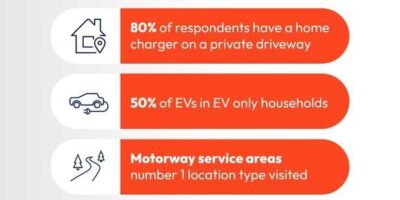Telematics can help fleets transform their risk profile – and the technology is available in more formats and price points than ever.
Evidence suggests that most fleets that use telematics only exploit its operational capabilities – functions like asset tracking, geo-fencing and delivery performance. They are not harnessing the phenomenal power of telematics to improve driver behaviour, lower their risk profile and reap all the financial benefits which go with the two.
To gain the huge safety and financial benefits of telematics, fleet managers must use the information to power driver coaching. If you have no resource to read the telematics reports or to coach drivers, consider one of the offerings which coaches drivers directly, or does the analysis for you.
Many systems offer gamification and eLearning modules to incentivise and support driver learning.
Now’s the time
Why is this the best time to get telematics on board? Telematics is now a mature market with an array of solutions to fit all budgets and operational profiles.
Traditional CANBus (Controlled Area Network) telematics feeds exception events (harsh braking etc) back to fleet managers along with any diagnostic codes from the vehicle. It will usually generate results to highlight either the riskiest drivers on the fleet for management intervention, or specific problem issues such as speeding.
Camera enabled telematics. Many telematics programmes will now integrate camera feeds to give a full narrative of events. Where traditional telematics will highlight an emergency braking event, camera footage can show whether the driver had been reckless – or heroic.
Managed video systems. These both capture any exceptional footage and analyse driver behaviour, feeding coaching notes back to managers. This is a huge time saver for fleets. The systems also capture braking, revs, acceleration and GPS coordinates.
In-cab real-time driver behaviour systems. There are various systems which coach the driver in real time (with warning lights or coloured icons if they exceed parameters) and which will highlight success, progress or areas of concern at the end of their shift.
The benefits of telematics
If driver behaviour systems are used properly – that is, actionable insights captured and shared with drivers – the benefits can be huge and rapid.
Camera-based systems usually achieve a return on investment within the first few weeks purely from providing rapid evidence in no-fault claims
Lower collision rates
Lower fuel usage – up to 10%
Fewer near misses
Less uninsured damage
Less wear and tear on vehicles, lower repair costs and better residuals
Improved insurance premiums
A clear audit trail of driver management
Better driver protection from injury and fraudulent claims
Better driver retention
Richard Stansfield, Director of Business Development at Auto Electrical Services describes the benefits he sees from using telematics on his fleet of nine vans at AES:
“Telematics does not only help fleet managers, but also drivers, administrative staff and anyone else involved in operating a business fleet. The key benefits of working with a telematics solution to us are:
Increase efficiency. We can easily access relevant, up-to-date info so you can plan effectively and adapt quickly when unexpected events arise.
Increase productivity. We use accurate real-time traffic info to keep your drivers on the fastest routes and complete more jobs.
Improve safety. Our Telematics system can give enhanced insights to help reduce unsafe driving behaviour that could harm our drivers, vehicles, or business reputation.
Decrease costs. We encourage more fuel-efficient driving and avoid expensive repairs by getting timely maintenance reminders this benefits in reduced maintenance cost and down time of vehicles. The fuel and fault codes are monitored through the telematics.
Improve communication. We stay connected to drivers by sending job details from your office to Driver Terminals in their vehicles. This also gives increased productivity.
Increase customer satisfaction. Our customers informed of schedule changes and cut unnecessary waiting times.
Reduce stress for drivers. We can set the best route for drivers and give timely traffic updates through driver terminals, so they can do their job with ease.
Simplify administration. We save time across different departments by automating administrative tasks.”
Telematics can help fleets to discharge their duty of care, lower their work-related road risk, and protect their expensive assets – both human and vehicle. It makes road risk visible and measurable and, once it can be seen and measured, it can be managed.
The business case for telematics is generally a ‘no-brainer’. If your fleet isn’t using telematics, why not choose the right kind of system for you and run a pilot? See for yourself the improvements it can make to your on-road incidents and your bottom line.
Many fleet operators rely on telematics to improve the safety and efficiency of their fleets. Check out these business benefits case studies.
*Article Source http://www.drivingforbetterbusiness.com








